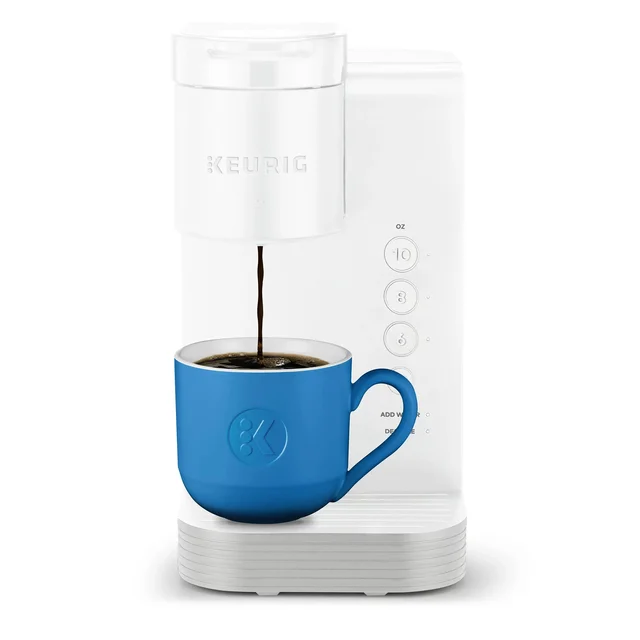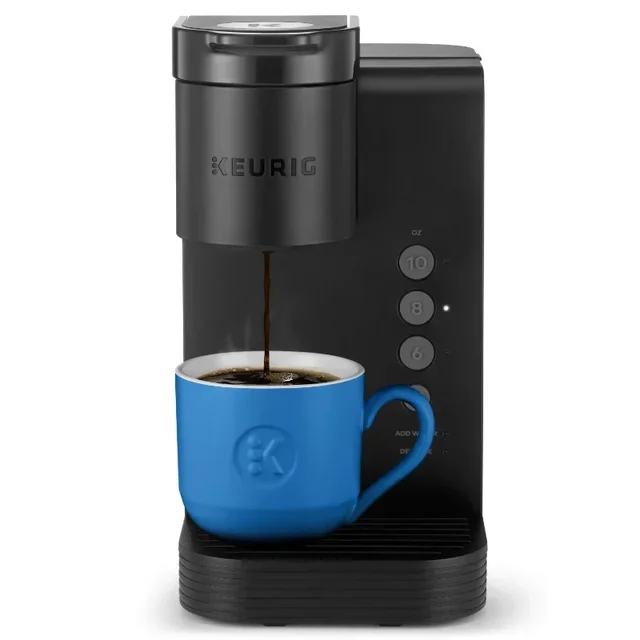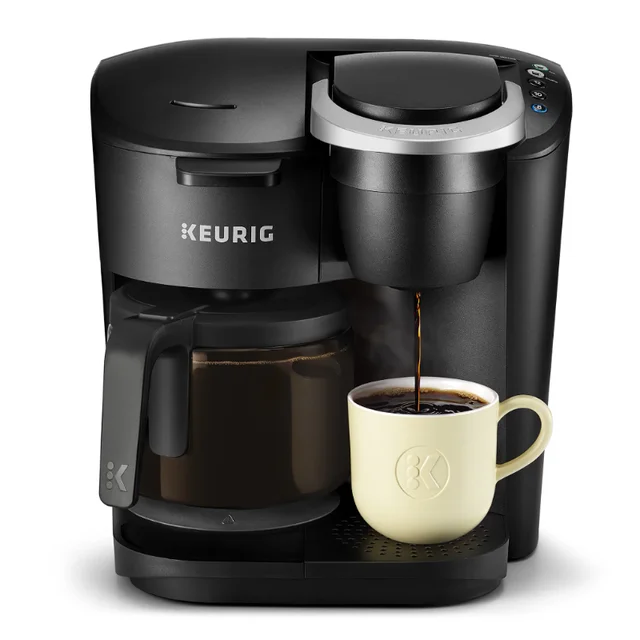
Introduction to Keurig Mold Issues
When you sip your morning coffee, the last thing you want is mold. Yet, Keurig users often report finding mold in their machines. These single-serve coffee brewers can harbor mold without regular cleaning. This post explains why Keurig machines get moldy. Also, it offers tips to keep your coffee safe and your machine clean. Discover signs of mold in Keurig machines and the health risks they pose. Learn simple steps to prevent mold from growing in your coffee maker. Keep your Keurig in good condition with our maintenance guide. Ensure the longevity of your machine and the quality of your coffee. Stay alert for when it’s time to replace your Keurig. Let’s make sure you enjoy your coffee, mold-free!

Signs of Mold in Keurig Machines
Knowing the signs of mold in your Keurig can help you act fast.
Visible mold and discoloration
Mold often appears as black spots or areas with discoloration. Check hidden parts inside the water reservoir and on the coffee pod area. Any change in color or weird marks might mean mold.
Unusual smells or tastes
A musty or sour smell from your Keurig is not good. This could be mold. The taste of your coffee might also change. If it’s off, don’t ignore it. Your machine could need cleaning or have mold growth.
Health Risks Associated with Keurig Mold
When your Keurig becomes a mold host, your health could be at risk. Keurig sickness, caused by mold exposure, can affect you in many ways. Act fast at the first sign of symptoms to prevent worse health issues.
Symptoms of Keurig sickness
If you feel sick and have used a Keurig, consider these symptoms:
- Stuffy nose: Blocked nasal passages may occur.
- Watery eyes: Your eyes might tear up more.
- Sneezing: You could start sneezing unexpectedly.
- Wheezing: Listen for whistling sounds as you breathe.
- Coughing: A persistent cough indicates lung irritation.
- Skin rash: Look for any unusual redness or itchiness.
- Headache: Be aware of any new, persistent headaches.
- Sore throat: A scratchy or painful throat can be a sign.
- Heartburn: Watch for any burning sensations in your chest.
- Upset stomach: Nausea or vomiting shouldn’t be ignored.
These symptoms can mimic a cold but may actually be a reaction to mold.
Long-term health implications
Long-term effects from Keurig mold are rare but possible. Those with allergies or asthma could face serious reactions. Sensitive individuals should consult a doctor if symptoms persist. Avoid long-term exposure to mold to minimize potential health risks.
Why Keurig Machines are Prone to Mold
Keurig coffee makers are convenient, but they are also prone to mold growth. Let’s explore the reasons behind this issue and what you can do to prevent it.
Moisture and water reservoirs
Keurig machines have water reservoirs that can house moisture. If you do not clean and dry them well, mold can grow. These areas provide the perfect damp environment for mold spores to thrive.
Difficulty cleaning certain parts
Some Keurig machine parts are hard to reach. This makes cleaning difficult. If these areas are not cleaned regularly, mold and bacteria can develop. It’s important to use tools like a needle cleaner to reach these spots. Also, follow a thorough cleaning routine to prevent mold from taking hold.
Preventive Measures to Avoid Mold
To keep your Keurig free of mold, follow these key steps.
Regular cleaning routine
Develop a habit of cleaning your Keurig regularly. Wash all detachable parts weekly with soapy water. Dry them fully before putting them back. Clean hard-to-reach spots with special tools. Use a needle cleaner for the best results. Descaling solutions help remove mineral buildup; use them every three to six months.
Ensuring a dry environment for storage
After using your Keurig, leave the lid open. This lets the water tank air out and stay dry. Store your Keurig in a cool, dry place. Avoid damp areas where mold could grow.
Replacing water and filters frequently
Change the water in your Keurig’s tank often. Don’t let water sit for too long. Also, replace the machine’s filters every two months. This prevents mold from tainting your coffee. Keep these practices, and your Keurig will serve you mold-free coffee for years.
 Step-by-Step Cleaning Guide for Your Keurig
Step-by-Step Cleaning Guide for Your Keurig
Keurig coffee makers require regular cleaning to prevent mold. Follow this guide to keep your machine in great shape.
Gather necessary supplies
Start by assembling your cleaning toolkit:
- White vinegar or Keurig descaling solution
- Fresh water
- Dish soap
- A soft cloth or sponge
- A small brush or needle cleaner
Having these at hand makes the process smooth and efficient.
Descale and clean all removable parts
First, descale your Keurig:
- Mix equal parts white vinegar and water in the reservoir.
- Run several brew cycles without a K-cup until the reservoir is empty.
Next, focus on removable parts:
- Take apart pieces like the drip tray, K-cup holder, and water tank.
- Wash them in soapy warm water.
- Rinse thoroughly and let them air dry before reassembly.
Regular descaling keeps your Keurig functioning well and your coffee tasting fresh.
Clean hard-to-reach areas
To reach tricky spots:
- Use a needle cleaner or small brush.
- Clean any needles or tubes where coffee grounds could get stuck.
- Be diligent with these areas as they are prone to mold development.
By following these steps, you create a hostile environment for mold and ensure your Keurig remains clean.
When to Replace Your Keurig Machine
A Keurig machine is a handy kitchen appliance. But sometimes, it needs to be replaced. How do you know the time has come? Look for signs that it’s time to get a new one.
Signs of recurring issues
Repeated problems are a clear indicator. If cleaning doesn’t fix the issues, consider a replacement. Common problems to watch for include:
- Constant clogs and coffee grounds in your cup.
- Water not heating or machines taking too long to brew.
- Strange noises or leaks during brewing.
These issues suggest your Keurig may be on its last legs.
Visible damage and inefficiency
Physical damage is a sure sign. Cracks or broken parts can mean it’s time for a new machine. Also, if your Keurig uses more energy and still performs poorly, think about an upgrade. A new machine can save time and energy. Reduced performance and increased energy bills are not good.
If you notice these signs, don’t wait. It’s better to replace your Keurig before it completely fails. Keeping your coffee experience pleasant is important. Always choose the best for your health and enjoyment.
 Common Questions About Keurig Cleanliness
Common Questions About Keurig Cleanliness
Many Keurig users have concerns and questions about mold in their machines. Below, we address common misconceptions and provide effective cleaning methods.
Addressing misconceptions and cleaning methods
Misconception 1: Keurigs don’t need regular cleaning.
This is false. Like any coffee maker, Keurigs can develop mold without routine care.
Misconception 2: Mold in Keurigs is rare.
Contrary to belief, mold in Keurig machines is quite common due to moisture.
Misconception 3: A quick rinse is enough.
Simple rinsing isn’t effective. Deep cleansing and descaling are essential for mold prevention.
Cleaning Method 1: Use white vinegar or a descaling solution.
Mix equal parts with water and run multiple brewing cycles.
Cleaning Method 2: Wash removable parts often.
Detachable components should be cleaned weekly with soapy water.
Cleaning Method 3: Replace filters and water.
Change the water in the reservoir frequently and filters every two months.
Cleaning Method 4: Dry the machine after use.
Leaving parts to air dry prevents damp conditions that invite mold.
Cleaning Method 5: Check and clean tough spots.
Use tools like needle cleaners for areas that are hard to reach.
By following these methods and addressing the misconceptions, you can maintain a clean and safe Keurig machine. Regular upkeep not only prevents mold but also ensures delicious coffee every time.